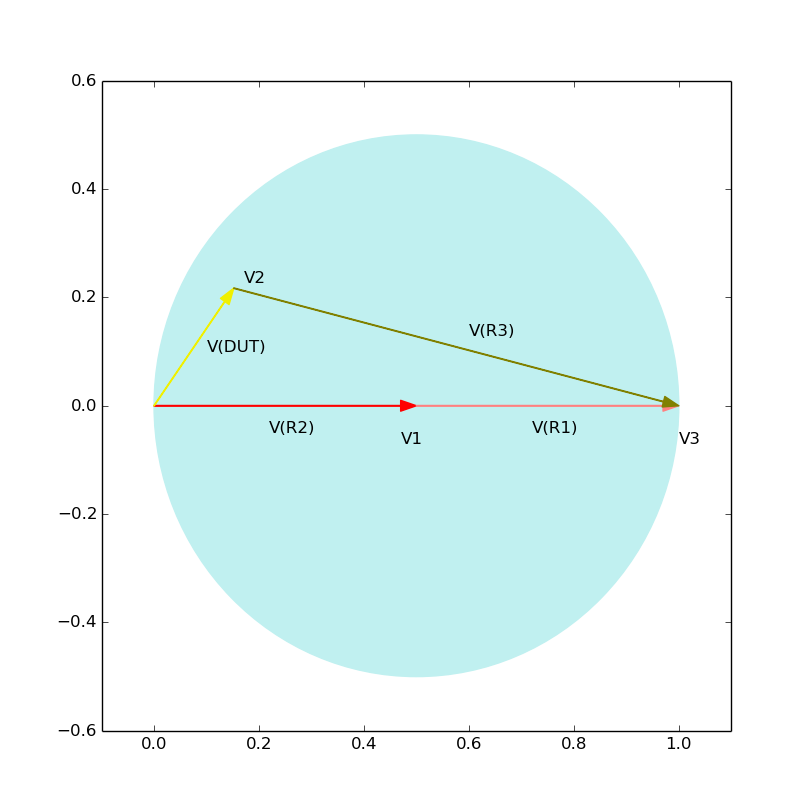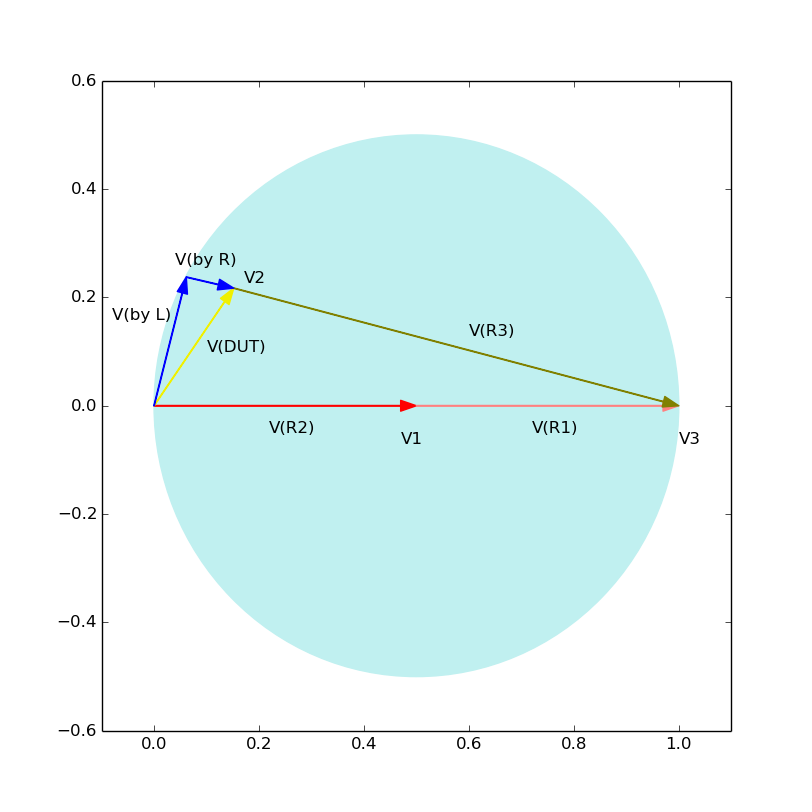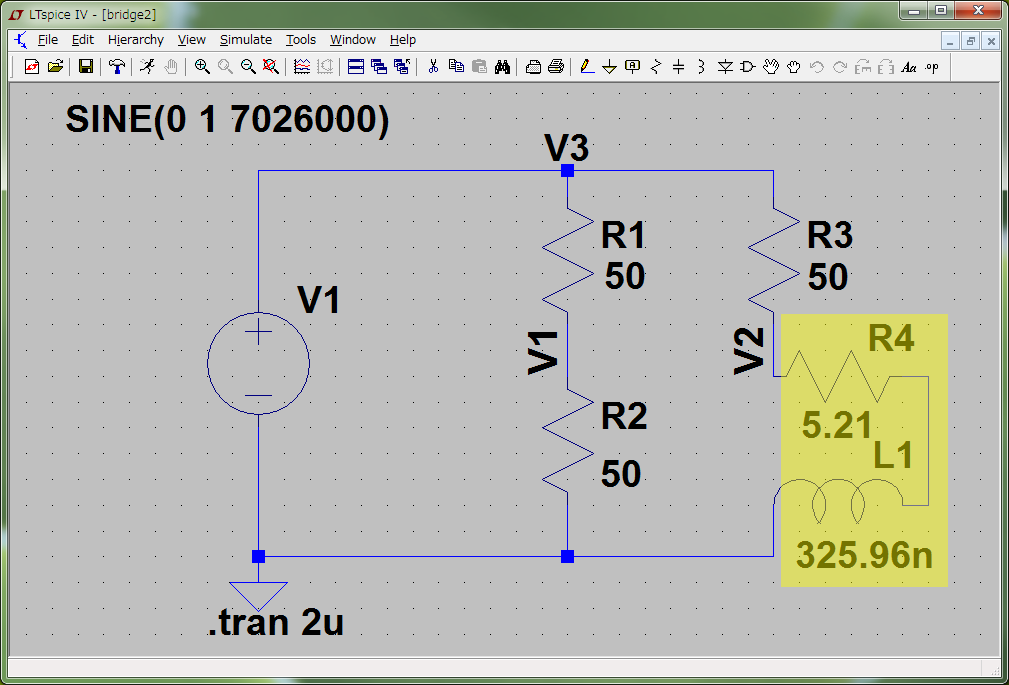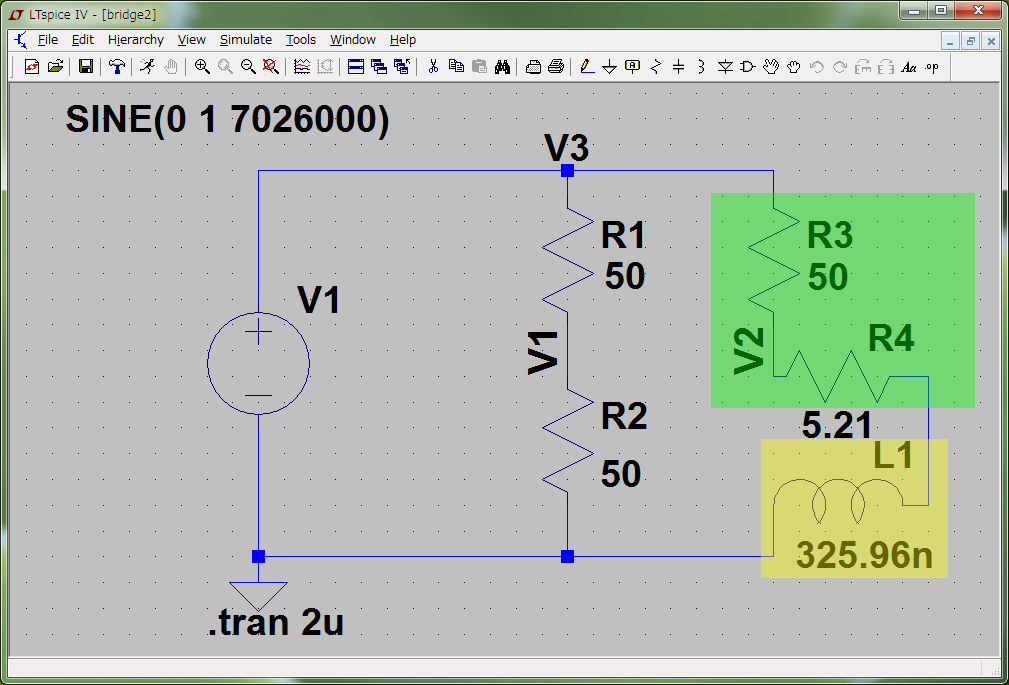If your DUT is not purely reactive, which means Z(DUT)=R+jX has some none-zero R, V2 is not on the circle, but on somewhere within the circle.
But in those cases, V(DUT) can be divided into two orthogonal vectors, V(by L) and V(by R), and the end point of the vector V(by L) is still on the circle. (Note that here we assume X>0, or in other words, your DUT is inductive, thus V2 is in the upper half.)
The fact that the end point of the vector V(by L), is always on the circle is understood easily by considering the real part of your DUT, R4 in the yellow box, as belonging to R3.
Your DUT is now purely reactive, and you are measuring the device with R3+R4, instead of with R3.




